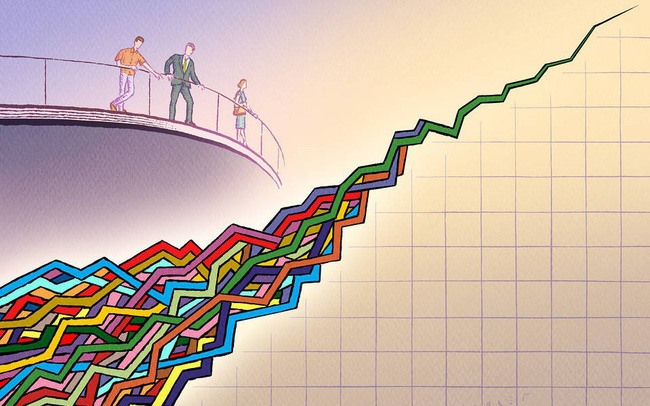 Economy
Economy

The derivatives market has grown strongly over the last three months as investors switch from stocks to derivatives to avoid short-term risks on the stock market.
 |
| The derivatives market has grown strongly over the last three months as investors switch from stocks to derivatives to avoid short-term risks on the stock market.— Photo cafef.vn |
HÀ NỘI — The derivatives market has grown strongly over the last three months as investors switch from stocks to derivatives to avoid short-term risks on the stock market.
Since April 9 when the benchmark VN Index touched its all-time high of 1,204.33 points, it has lost 23.8 per cent to end at 917.51 points on July 6.
That was also the lowest level for the VN Index since December 15. After a three-month decline, the VN Index has turned from one of the world’s best-performing indices to among the worst-performing.
The decline of the Vietnamese stock market has been attributed to the volatility of global stocks, which have been affected by rising trade tensions between the US and China, and the Federal Reserves’ interest rate hikes.
These factors have triggered strong foreign sell-offs across the world’s emerging and frontier markets, pulling local stocks down and having negative impacts on domestic investor confidence in the markets’ short-term prospects.
As a result, investors have begun looking for opportunities in the derivatives markets, starting with four futures contracts that are based on the blue-chip VN30 Index.
According to the Hà Nội Stock Exchange, the trading volume and value of VN30 futures stood at 11,135 contracts worth VNĐ1.3 trillion (US$58 million) on April 9.
The figures had risen significantly in the last three months to 164,872 contracts worth VNĐ14.5 trillion on July 6.
Since its official launch in August 2017, the trading volume of the derivatives market had gained by almost ten times from 58,444 contracts worth VNĐ4.36 trillion in August 2017 to 563,500 contracts worth VNĐ61.9 trillion in April 2018.
The number tripled in May (1.64 million contracts worth VNĐ162.5 trillion) and nearly quadrupled in June (1.98 million contracts worth VNĐ193.4 trillion). Nearly 724,500 contracts worth VNĐ64.8 trillion were exchanged in the first week of July.
In the past two weeks, the average daily trading liquidity on the derivatives market stood at around VNĐ11 trillion worth of contracts.
Compared to the stock market, trading liquidity has fallen to between VNĐ3-4 trillion from VNĐ8-9 trillion in the past two months as investors remain concerned about potential risks that could dampen the market.
According to Nguyễn Việt Đức, deputy director of the individual investor department at MB Securities Company, the derivatives market has emerged as an attractive, profitable investment channel thanks to its intraday selling and buying and low margin lending rate (investors are required to deposit only 10 per cent of the contract value). Compared to the stock market, the margin lending rate that investors are required to deposit is at least 50 per cent of the transaction value.
Investors can earn profits from derivatives trading because they can sell futures contracts whenever they want, depending on the market’s expectations, he said, adding that is different from the stock market where investors can only make profits after stocks arrive at their accounts three days after being bought and the stock prices go up.
Investors can make precautionary decisions for their stocks on the primary market by selling futures contracts on the derivatives market, thus offsetting the losses when the stock market declines, Đức said.
However, derivatives futures should be a way to help investors minimise potential risks on the stock market, especially individual investors, not making short-term profits, he said.
Tạ Thanh Thao, director of individual investor project 2 at Saigon Securities Inc, said that derivatives products are yet to play their role as risk-hedging tools because individual investors still see the new products a way to make short-term profits.
“Most Vietnamese individual investors on the derivatives market trade on the movement of the stock market. Only a few professional investors, most of whom are funds and institutions, see derivatives as a risk-hedging tool.”
The volatile primary market has created a bumpy derivatives market at the same time, which is making it become a new attractive investment channel, he said, adding that investors will switch to derivatives products when they see potential difficulties with the primary market. — VNS




